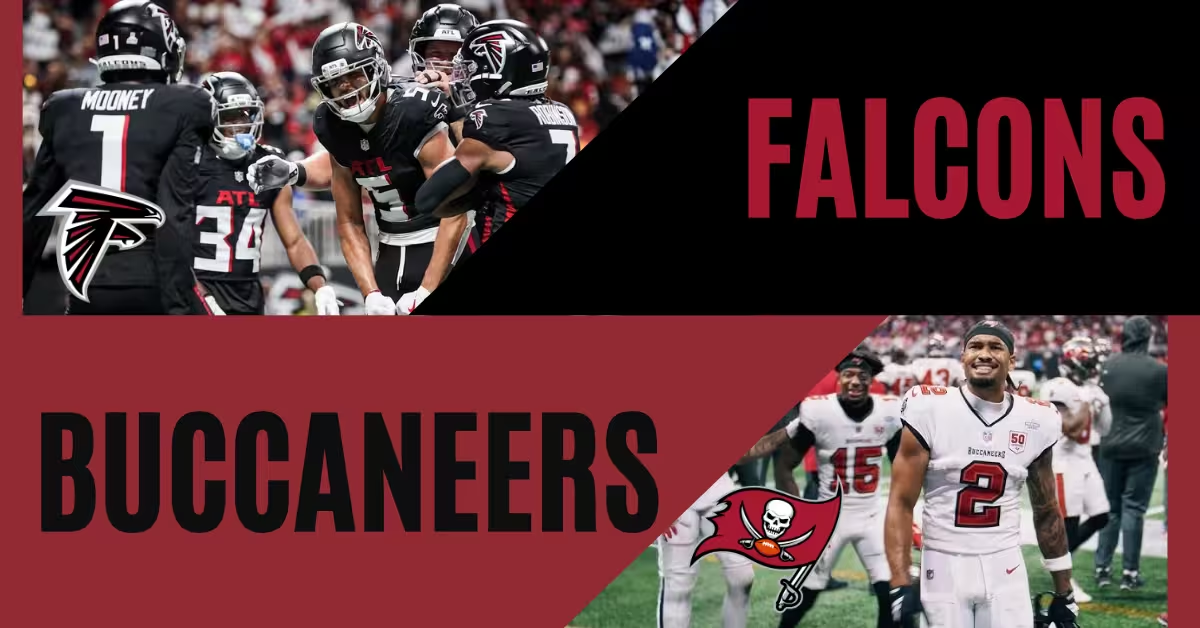The ‘Reverse Line Movement’ Strategy: What Most Bettors Miss

You’re looking at betting lines. Everything is as it should be until you notice that a betting line is moving backwards. Are you seeing things? Is it a glitch? Why is the fav team shrinking even though everyone and their mom is betting on them?
You don’t need readers, and you don’t need to restart your device. What you’re witnessing is called Reverse Line Movement (RLM). It’s a curious thing, but it’s not some kind of a sportsbook poltergeist. Nope, it’s a sports betting strategy that smart bettors use to find out where the smart money is going. And most casual bettors don’t even know what it is, let alone realize that it’s happening. If they do? They shrug it off as “Vegas knows something.” But reverse line movement can speak volumes about a game if you know how to listen.
In our guide, we’re going to break down the RLM strategy in basic English. You’ll get all of the insider info on which side the sharp bettors (the pros) are taking, and you don’t need a direct line to Vegas. We’ll cover what RLM is, why it happens, how to see it, and how you can use it to make smarter bets so you’ll understand why the betting line “talks back” against public opinion, and how to take advantage when it does!
What Is Reverse Line Movement (RLM)?
Reverse Line Movement is a term for when a betting line moves in the opposite direction of what you’d expect. In normal situations, if a ton of people are betting on the same team, sportsbooks will adjust the odds to make that side less attractive (and the other side more appealing) to balance the scale. If the Dallas Cowboys open as a 7-point favorite and everybody piles money on Dallas, the sportsbook could bump the line to -8 or -9 to encourage some bets on the other side. That’s the usual logic.
Reverse line movement is kinda the opposite. It happens when a line moves against the weight of public bets. Take that same game: Dallas opens at -7, and 80% of bets are on Dallas. Logically, we’d expect the line to grow to -8 or more. But suppose the line drops to Dallas -6.5 or -6. Wait, why would the bookie make the Cowboys a smaller favorite when most people are betting on them? That’s RLM happening. It’s the sportsbook’s way of saying, “We’re not scared of all those Dallas bets. And better yet,we’ll make it easier to bet Dallas.”
When you see this happen? It’s a signal that means a lot of money (usually from sharp bettors) has come in on the other side (in our example, on the Cowboys’ opponent). Sportsbooks respect that money enough to move the line opposite to public demand. RLM is the sportsbook’s way of clueing you in that the popular side might not be the right side. It’s comparable to a tell in poker, and if you catch it? You get insight into what the house and the sharps are thinking.
What Causes Reverse Line Movement?
Reverse line movement doesn’t happen randomly; there are a few important reasons behind it. The primary cause is the influence of sharp money versus public money. Sharps (professional bettors or super knowledgeable bettors) tend to wager large amounts and have a track record of winning. The public (aka “squares”) are the regular people who bet smaller amounts and usually go with their gut feelings or the most popular teams.
When a few sharp bettors drop big bets on one side of a game, it can outweigh hundreds of small public bets on the other side. Sportsbooks pay really close attention to this. Their goal is usually to balance the money on both sides, but they also know which bettors are more likely to beat them in the long run.
What causes an RLM? The following:
Heavy Sharp Action
If sharps load up on Team B while the majority of casual bets are on Team A, the sportsbook will move the line to favor Team B despite Team A being the popular choice. It’s a sign that the book respects the big, informed wagers. If 70% of the number of bets are on the Yankees, but a few high-rollers put massive money on the Red Sox, the line will shift toward the Red Sox. The book is saying, “We’ve seen enough from the big dogs to change our stance.”

Sportsbook Liability and Risk Management
Sportsbooks hate having all of the risk on one side. If a line is getting pounded on one side, they usually react by moving the odds to stem the tide. However, in RLM situations, the risk isn’t from the sheer number of bets, but from where the big money is. A sportsbook will find itself needing the side that the public is on (because sharps are on the other side with big bets). To mitigate the risk, they move the line opposite of public betting to entice more action on the public side’s opponent. It seems counterintuitive, but they are balancing the money, not necessarily the count of tickets.
Trust in Sharps’ Opinions
Bookmakers have a pretty good idea of who their sharp customers are. If those sharps bet heavily on an underdog, the bookmaker might move the line in favor of that underdog even if most others are betting ton the favorite. Why? Because history has taught them that those sharp bettors are usually right. The book is tipping its cap to the pros and adjusting odds in their direction. This creates a reverse movement of the line relative to the public betting flow.
Sometimes other factors can cause what looks like RLM. Big news (like a star player injury or sudden weather changes) can unexpectedly move a line, even if the betting percentages don’t match the move. But true RLM, as a strategy, is rooted in that back and forth between sharps and public money.
How to Spot RLM in Real Time
Catching reverse line movement in real time is like storm-chasing for sports bettors; you’re watching for any sudden shifts and trying to figure out what they mean. Below is how you can spot RLM as it happens:
- Track Betting Percentages: First, you’ll need to have info on where the bets are going. Almost all sportsbooks and sports betting sites publish betting splits, usually the percentage of bets (tickets) on each side and the percentage of total money on each side. If you see that 75% of bets are on the Lakers -5 tonight, watch the numbers using a live odds board or a betting analytics site. It doesn’t have to be precise, but knowing the general public sentiment is important.
- Watch the Line Movement: Simultaneously, monitor the line itself (the point spread, moneyline, or total). Take note of what the opening line was and how it moves as the game nears. If the majority of bets are on one side? The line usually moves to make that side less attractive (moving toward the other side). But if you see the line move in a way that helps the popular side, your RLM detector should light up. If Team X opened at -4 and got heavy public action, but now they’re -3? That’s a line move in the opposite direction of expectation.
- Compare the Two: Compare the betting percentages to the line change. If 70% of bets are on Team X -4, but the line is now Team X -3, eureka! You’ve likely spotted reverse line movement. It’s a telltale sign that despite a majority of people betting X, the sportsbook adjusted the line to make X even cheaper. The only logical reason is that significant money, probably from sharps, came in on Team Y, causing the book to move the line toward Team Y.
- Use a Few Sources: To confirm that it’s not a glitch or one-off, check a few different sources. One sportsbook’s data might show the split, and another site might show the live line movement. If several books all move the same way, that’s a confirmation of a broader market move. Some betting markets are sharper than others, like Las Vegas books or certain online books that are known to take big bets. If you see an odd move at a sharp book while public money is opposite, that’s a classic RLM signal.
- Stay Alert to Timing: Real-time means that things can change quickly. Occasionally, an RLM can appear early in the week for football games because sharps bet early, and then the line might creep back if public money pours in later on. Or it can happen on game day when limits are higher and sharps make their final moves. The trick is to catch the moment the line goes the “wrong way” relative to the public bets. If you’re watching lines throughout the day, those moments will stand out like a red flag on the odds screen.
Why Most Bettors Miss This Strategy
Okay, so if reverse line movement is so useful, why aren’t all bettors using it? There are a few reasons why!
They Don’t Know It Exists
Most casual bettors? They aren’t even aware that RLM exists. They either haven’t heard the term before, or if they did, it sounds too technical or “insider-ish.” A lot of bettors just check the odds, place their bet, and hope for the best. The idea of analyzing why a point spread went from -7 to -6.5 doesn’t even cross their mind. They are only focused on picking teams, not the mechanics of the betting line.
Focus on Picks, Not Lines
The average bettor is fixated on who to bet on the team or outcome rather than any subtle changes in the odds. They’ll spend hours researching team stats or listening to sports analysts, but little to no time tracking line movement. And when a line moves opposite to what the public is doing, they might not even notice, let alone interpret its meaning. They’ll see a line move and think “Oh, the odds changed” without asking the most important question, “Why did it change?” For RLM, the “why” is everything.
Lack of Data or Tools
Spotting RLM requires knowing the betting percentages, and these come from sportsbooks or specialized websites. Casual bettors usually don’t use these resources. If you’re just glancing at your betting site or app, you won’t see what percentage of people are on each side nationwide. Without that info, RLM is invisible. Bettors who don’t use line tracking tools are in the dark about this strategy.
Psychological Bias and Groupthink
Betting against the crowd can feel risky or uncomfortable. If 80% of people are on Team A, going with Team B feels contrarian and scary. A lot of bettors feel safer being on the same side as everyone else—it’s a herd mentality.
Reverse line movement points against the popular pick, which means following it requires you to buck the trend. That’s not something most recreational bettors like to do, especially if they’re fans who are betting with their hearts. The end result? They ignore or miss the importance of RLM because it’s telling them to do the opposite of what “everyone else” is doing.
Misinterpreting Line Moves
Even those who do notice odd line movements could interpret them incorrectly. A casual bettor will see the Chiefs go from -7 to -6 and think, “Great, I can get a better price on the Chiefs!” without realizing that a line drop could be a warning sign. In other words, they see an opportunity (better odds for their favorite side) where a sharper bettor sees a warning. Without understanding the concept of RLM, a lot of bettors misread the situation and walk right into a trap.
The majority of bettors miss the reverse line movement strategy because it takes extra steps and info that they either don’t have or don’t use. But once you’re aware of it? You’ll catch on to the signals that others overlook. It’s mainly a case of “what you don’t know can hurt you, “ or at least hurt your bankroll.
How to Use Reverse Line Movement to Make Smarter Bets
Knowing about RLM is one thing; using it to improve your bets? That’s where the rubber meets the road. Below are the best ways to leverage reverse line movement in your betting strategy!

Follow the Smart Money
The core idea of using RLM is to side with the sharps when you see them flexing their muscles. If you see a true reverse line move, think about betting the side that the line moved toward (the side the sharps likely hit). If 75% of bets are on the Patriots -6 but the line drops to -5, that suggests the sharp money is on the underdog. You can then look harder at that underdog (and maybe take them). You want to ride shotgun with the professionals who prompted the move.
Combine RLM with Your Handicapping
Reverse line movement shouldn’t be the only reason you make a bet, but it can be a powerful validation tool. You already liked the underdog in a matchup because of your analysis (maybe you think the team is underrated or the matchup favors them). Now you see that the line is moving in that underdog’s favor, even though the public is against them, and that’s a big green light. And if you love a favorite but see RLM going against them, you might want to pump the brakes or decrease your stake. RLM can either reinforce your reasoning or serve as a warning to reassess.
Timing Is Everything
If you are planning to use RLM, you have to act fast or be ahead of the curve. By the time a reverse line move is obvious to everyone, the value on the sharp side could be gone. The whole point is that the line moved, meaning that the odds have changed. The best case scenario is to catch wind of sharp action before the line fully moves.
Realistically, you won’t always be first, but try to bet alongside RLM as early as you can. If you’re late to the party and the line has moved significantly, think twice. It might be better to pass on a game than to follow along at a bad price, as chasing steam is a quick way to erode your advantage.
Choose the Right Games
RLM signals tend to be more meaningful in games that have a lot of public action. High-profile games (NFL Sundays, marquee NBA matchups, college bowl games, etc.) attract tons of casual bets, which means that if sharps disagree? That’s a clear contrast. Using RLM on a random Tuesday tennis match or obscure sport won’t be as effective because there’s not as much public vs. sharp contrast, and one big bet can skew things way too easily. Focus on the popular games where “Joe Public” is likely betting on one side. That’s where you’ll find the classic sharps vs. squares battles that produce reverse line moves.
Context Is Important
If and when you decide to use RLM as a guide, always double-check if there’s any other explanation for the line move. Maybe a star player was announced out, and that could move a line independent of betting action. If you mistakenly think it’s sharp money when in fact the quarterback is injured, you’re not following sharps; you’re just reacting late to the news. The smart move is to scan news feeds or injury reports for an explanation whenever you see an odd line move. If nothing external explains it, then it’s likely true RLM and definitely worth considering as a sharp signal.
When you add RLM into your betting approach, you are taking advantage of a “market intelligence,” and the best bettors use it alongside solid handicapping, bankroll management, and line shopping to gain an overall advantage.
Common Mistakes When Using RLM
Reverse line movement is a great tool, but it’s not foolproof—nothing is. Bettors can and do make mistakes when they’re using this strategy. Below are the most common mistakes bettors use and how you can avoid them!
One of the biggest mistakes is blindly “chasing steam.” This means that you see the line moving and hurry to bet it just because it’s moving, without finding out why. If you jump on a line move late (after it already moved several points), you’re most likely getting a worse number than the sharps got. If sharps bet an underdog at +7 and you only catch it after it’s down to +5.5, you’ve lost a ton of value. Don’t assume a bet is still good just because sharps liked it at a higher payoff. Chasing the line after the fact is a fast way to blow your bankroll.
Just because there was a tiny line change in no way means that it’s a meaningful reverse line move. Odds can shift by a half-point because of normal betting patterns or a sportsbook adjusting to another book’s line. If 55% of bettors are on one side and the line moves half a tick in the other direction, that’s not a strong signal! A common mistake is seeing every little wobble as a sign from the betting gods. Real RLM involves a notable swing and a clear public betting discrepancy. Be careful that you don’t make mountains out of molehills.
Assuming every odd line move is due to sharp action is a mistake. A line can move for unrelated reasons, like injuries, weather, or a last-minute lineup change. If you don’t check for news, you might mistakenly credit sharps for a move that was actually caused by external events. Betting the “sharp side” in those cases can lead you astray because you’re not really following the sharps; you’re just late to react to public info. Always consider the context before betting on an RLM signal!
RLM analysis is only as good as the data that backs it. If you’re looking at betting percentages from a small sportsbook that mostly serves sharp bettors, the “public %” might not truly reflect the general betting public. Or if you only have the percentage of tickets but not the money, you could be misjudging the situation. 60% of tickets on one side only account for 30% of the money if the other 40% of tickets are huge bets. A lot of newbs to RLM assume that all percentage stats are equal. To steer clear of this mistake, use reputable sources and understand whether you’re seeing the count of bets or the money split. Ideally? You should get both!
There are bettors who get so enamored with RLM that they start betting any game that shows a reverse move, and they do so with no further analysis. This “set it and forget it” approach to RLM is a grave mistake. Yes, even sharp bettors can be wrong on a game, and not every RLM play is going to win. If you bet just because of RLM, you’re not really handicapping—you’re outsourcing your thinking entirely to perceived sharp action. It can work sometimes, but over the long haul, it’s super risky. Use RLM as a tool, not a crutch. You still have to consider the matchup, the stats, and other fundamentals when possible!
This is more of a general betting mistake, but it applies to RLM, too! Just because you think you have a hot tip from RLM doesn’t mean that you should bet the farm. Treat it like any other bet and stick to your bankroll management. Be prepared for the fact that sometimes you’ll follow a reverse line move and lose the bet. Don’t go on tilt or abandon the approach after one loss. And don’t double down huge on the next RLM game to “make up” for it—that’s chasing losses. Patience and consistency are always the most important things; RLM is a nice assist, not a short-term get-rich-quick scheme.
When to Trust RLM (and When Not To)
Reverse line movement can be a really powerful indicator, but knowing when you should trust it? That’s a must. There will be times when RLM is a neon sign pointing you toward a smart bet, and then there will be occasions when it’s more of a mirage. The following is how you can tell the difference!
When to Trust RLM
- Big Discrepancies: Trust RLM when you see a large gap between public betting percentages and the line movement. If 80% of bets are on one team but the line moves toward the other team, that’s a really strong sign. The more lopsided the betting and the more the line moves opposite, the more you can trust that sharps are causing it.
- Multiple Book Confirmation: If several reputable sportsbooks show the same reverse movement, it’s likely legit. A single sportsbook moving oddly could be a one-off, but if you check a few and all of them have that weird line shift? You can be more confident that it’s a true, sharp-driven RLM. Consistency across the market is a green light.
- No Obvious External Cause: When a line move can’t be explained by news or injuries, it’s more likely the work of sharp action. If an over/under total drops by 3 points without any news of weather or main players being out, chances are that the sharps hammered the under. In the absence of another explanation, you can trust an RLM at face value.
- Early Line Moves: Lines that move early in the betting cycle (like early week for NFL games, or overnight for the next day’s NBA lines) are influenced by sharps, since casual bettors usually will bet later or closer to game time. If you see an early reverse line move, that’s usually sharp money talking. Early moves can be trusted more because the public hasn’t piled in yet, and any dramatic shift is due to pros getting their bets down.
- Your Own Analysis Matches: You can trust an RLM signal more when it matches up with what your own handicapping or intuition was telling you—it’s a confirmation. If you thought that the underdog had value, and then you see RLM in their favor, it reinforces that you’re onto something. In these cases, you have both your reasoning and the market’s sharp signals on the same side, which will give you some extra assurance.
When Not to Trust RLM
- Small or Erratic Moves: Be super wary when the line movement is minor or bouncing around. A half-point tick that flips back a few hours later might not be true RLM; it could just be the sportsbooks adjusting to balance small bets or reacting to each other. If the line isn’t steady in one direction, it’s hard to pin it on sharp action definitively. Don’t overreact to every blip!
- Injury/News-Driven Moves: As we mentioned, if there’s a clear piece of news that just hit (star player questionable, weather forecast changes, etc.), a line move at that moment is probably due to that, not because sharps suddenly had an epiphany. In these scenarios, the betting percentages might not yet show the shift in sentiment. What looks like RLM (percentages vs. line) is really just the public (or everyone) reacting to news. Don’t put your trust in an apparent RLM if you know that an external factor is at play; it’s a coincidence, not sharp vs. public dynamics.
- Unreliable Betting Data: If you’re getting your info from a single sportsbook or a source that might not represent the whole market, be really cautious. If a sportsbook that caters mostly to recreational bettors shows 90% on one side, that could just be their customer base, and the broader market might be more balanced. If you then see a line move and think that it’s RLM? You could be wrong. If you aren’t confident in the betting percentages data, you shouldn’t put too much trust in the perceived RLM. Always consider the quality of the information!
- Late Huge Public Surges: Sometimes a line will move opposite early (indicating sharps), but then near game time, overwhelming public money might push it back or cause strange moves. Late-stage line moves can be really hard to read. If you see something that looks like RLM and it’s close to kickoff or tip-off, double-check if it’s just a last-second flood of bets. In chaotic late betting, the signal can get jumbled. Sharps usually bet earlier (though not always), so a late “RLM” might not be as trustworthy unless you’re absolutely sure that sharps are still at work.
- When You’ve Missed the Value: This is more about trusting it with your money. If a line has drastically moved due to RLM and you missed the good number, it’s probably too late to hop on. You can trust that it was a sharp move (they likely got the best number), but you might not want to trust betting it now. Sharps might’ve loved an under at 47, and it drops to 44. You can believe that was sharp action, but taking under 44 is a different bet. If the ship has sailed on the value? Don’t force it just because you trust that the move happened.
Conclusion: Know What the Line Is Telling You
The line isn’t always reacting to fan hype or sports media takes— it’s reacting to money, and sometimes that money is coming from bettors that the sportsbooks know and respect. Reverse line movement gives you a rare glimpse at where that sharp action is landing. And the majority of casual bettors miss out on it because they’re hyper-focused on teams and not how the market’s behaving. But the more you track it, the more you’ll be able to spot the small but sure signals that separate sharp betting from randomly guessing.
RLM won’t win every time, and it’s not something to chase impulsively. But it is a smart way to read between the lines—literally—and make informed plays instead of just following the crowd.
Look below for a quick recap of RLM:
- Reverse Line Movement can be a good signal of where sharp bettors are putting their money.
- It’s never a sure thing, but it can point you in a better direction.
- Compare public betting percentages to line shifts to catch it in action.
- Watching lines consistently will most definitely sharpen your read over time.
- Looking for more betting strategies? You can check out our collection of betting strategies here!

Alyssa contributes sportsbook/online casino reviews, but she also stays on top of any industry news, precisely that of the sports betting market. She’s been an avid sports bettor for many years and has experienced success in growing her bankroll by striking when the iron was hot. In particular, she loves betting on football and basketball at the professional and college levels.








